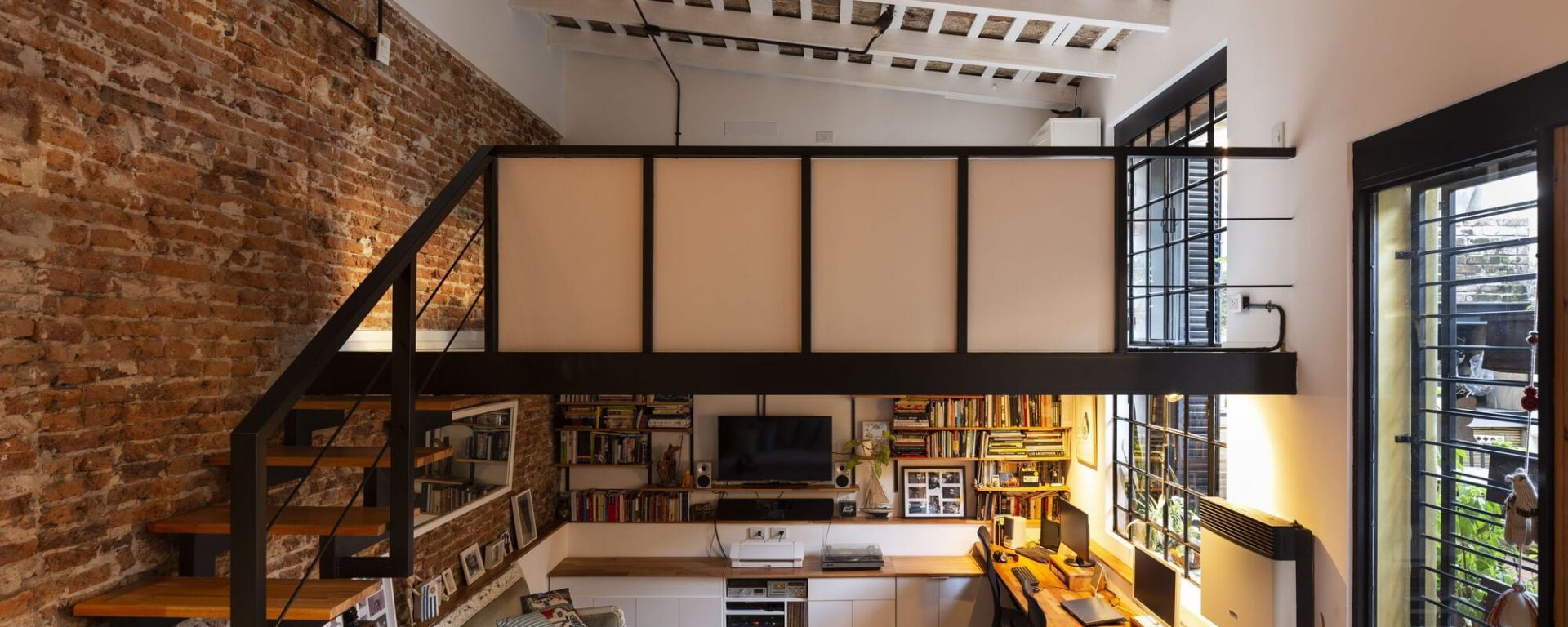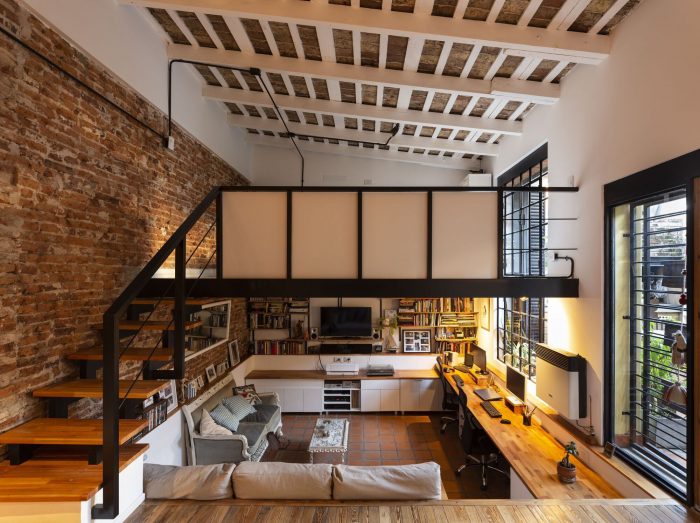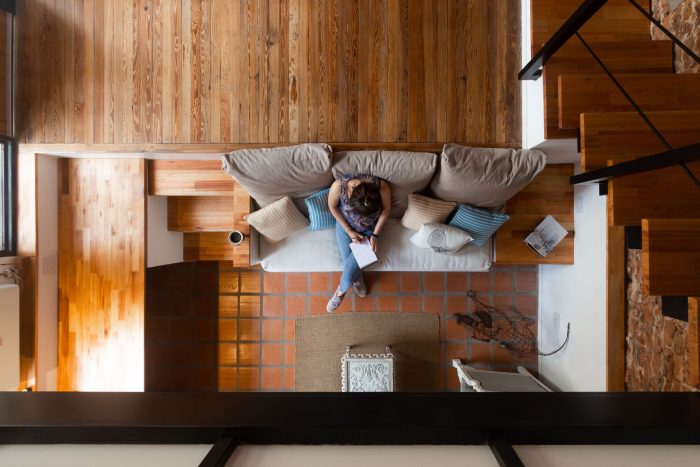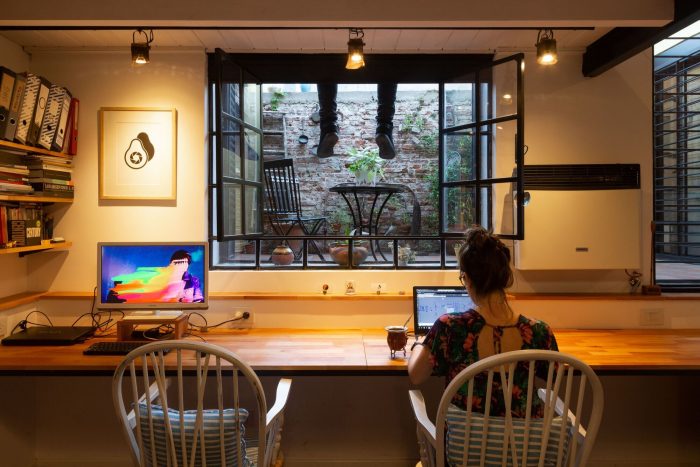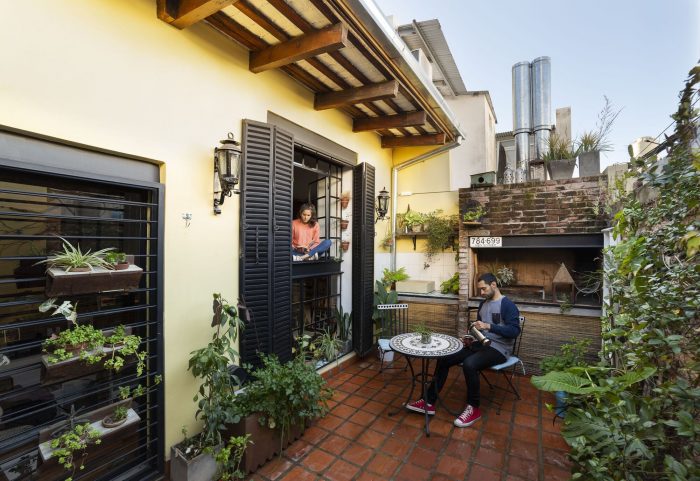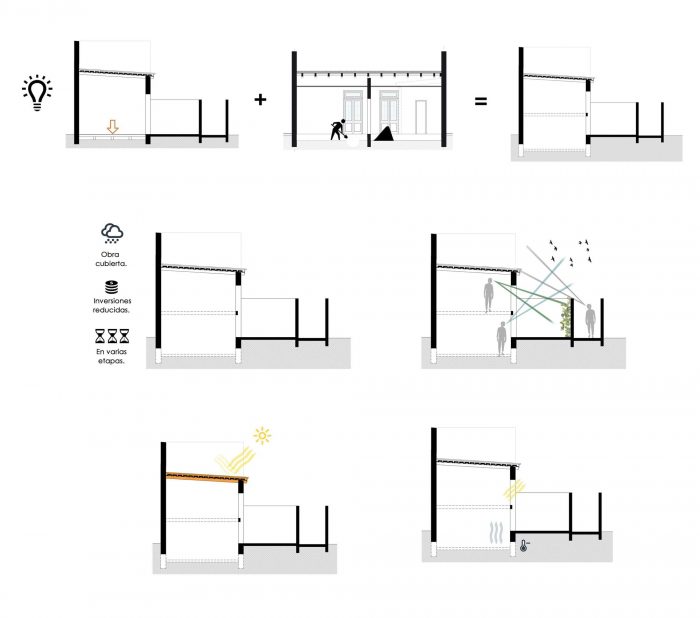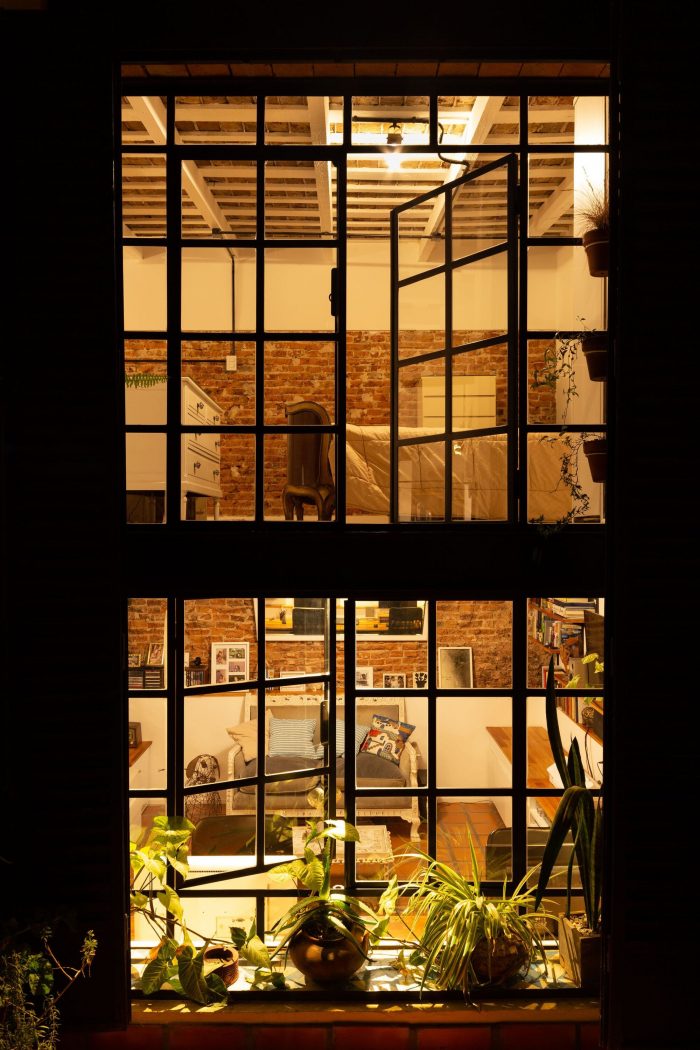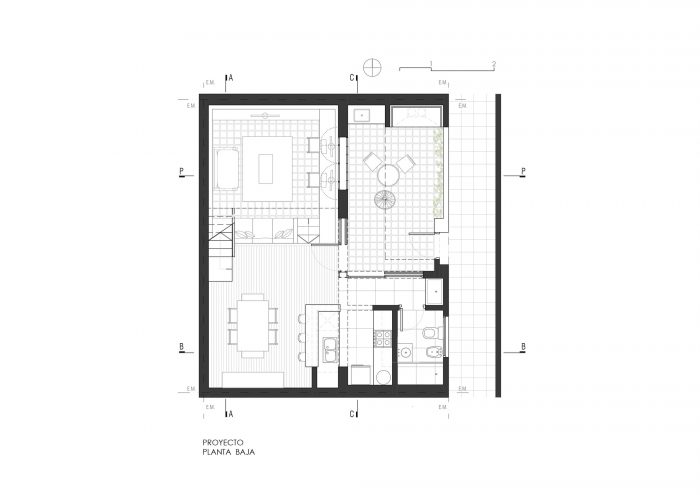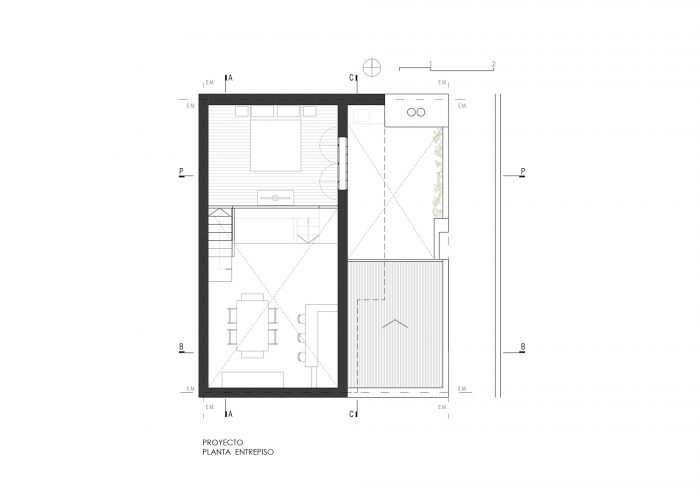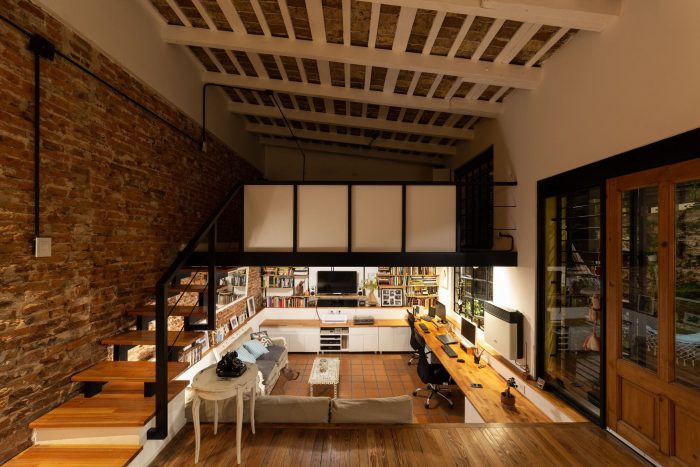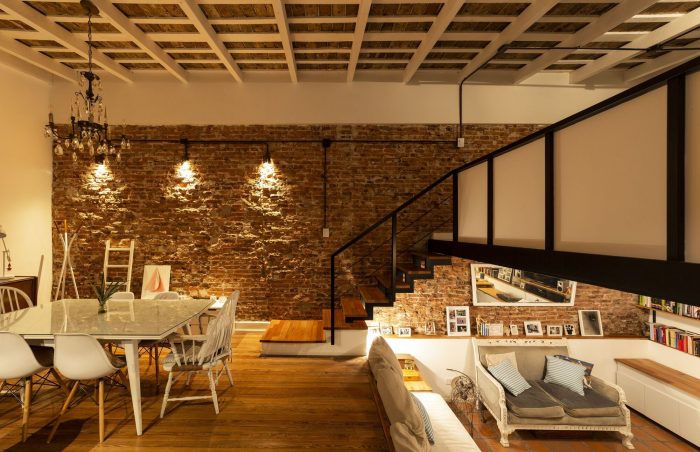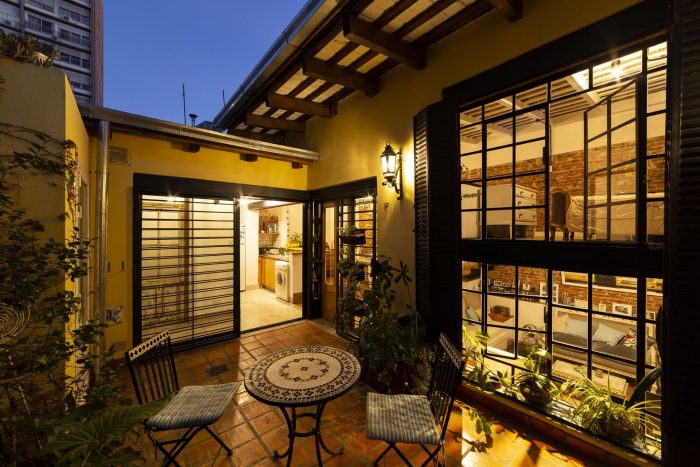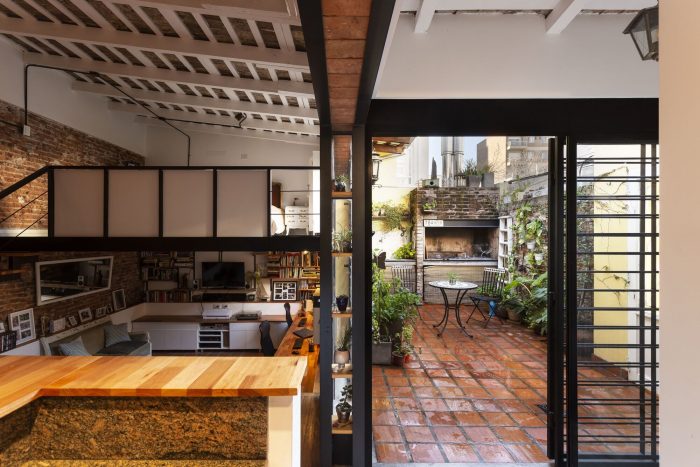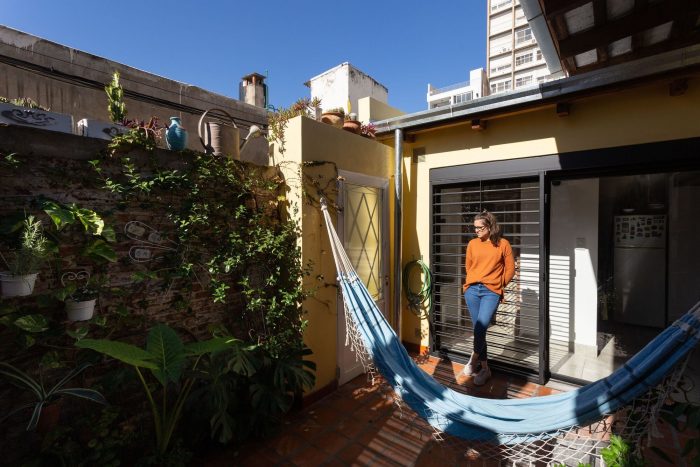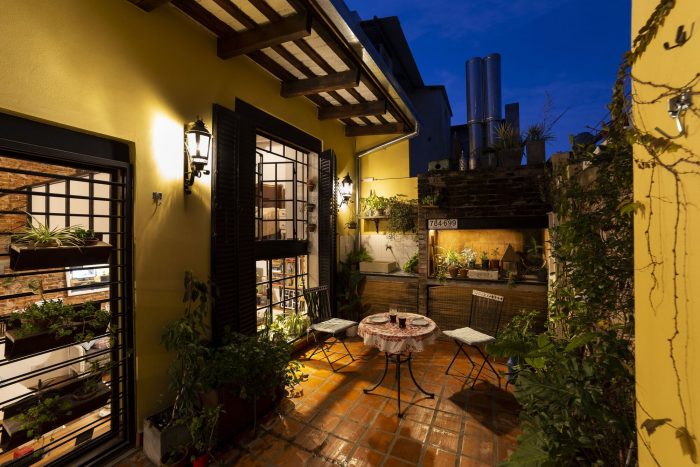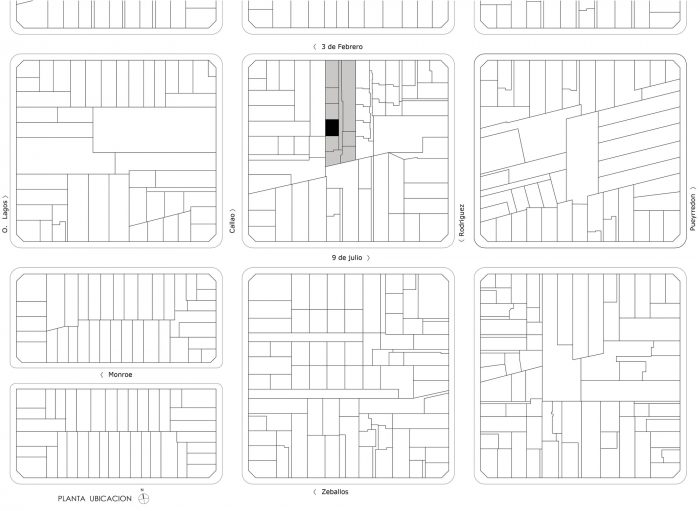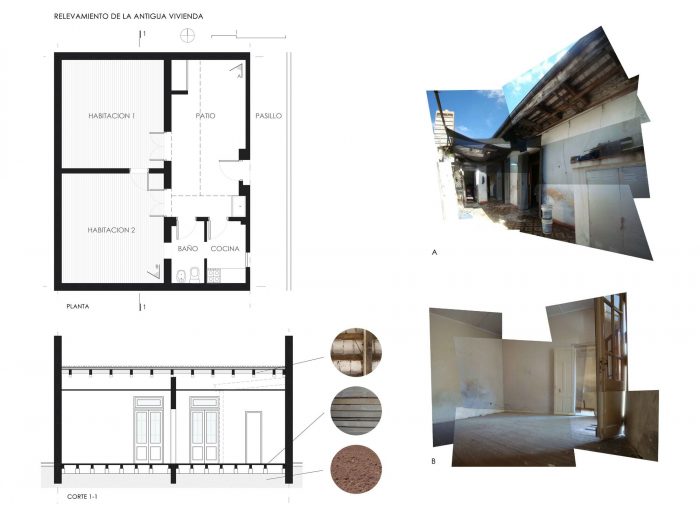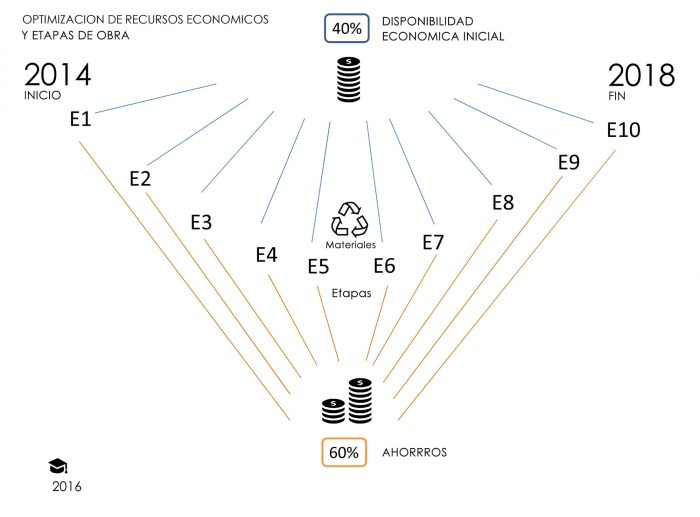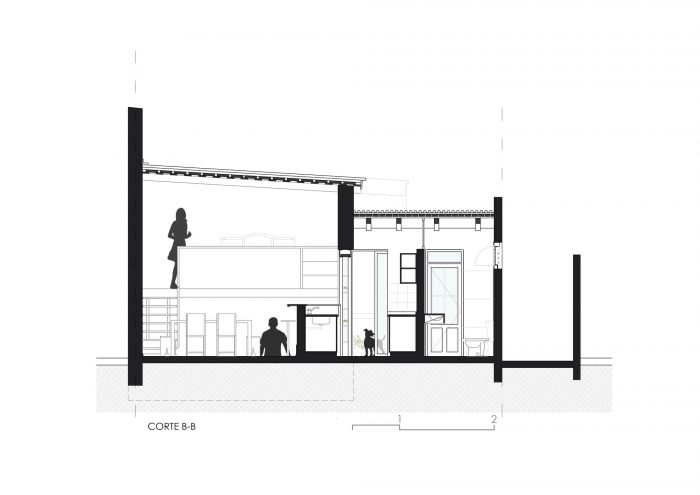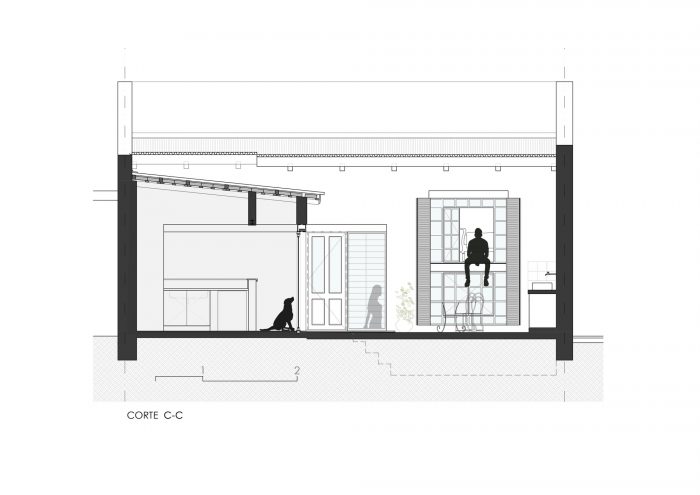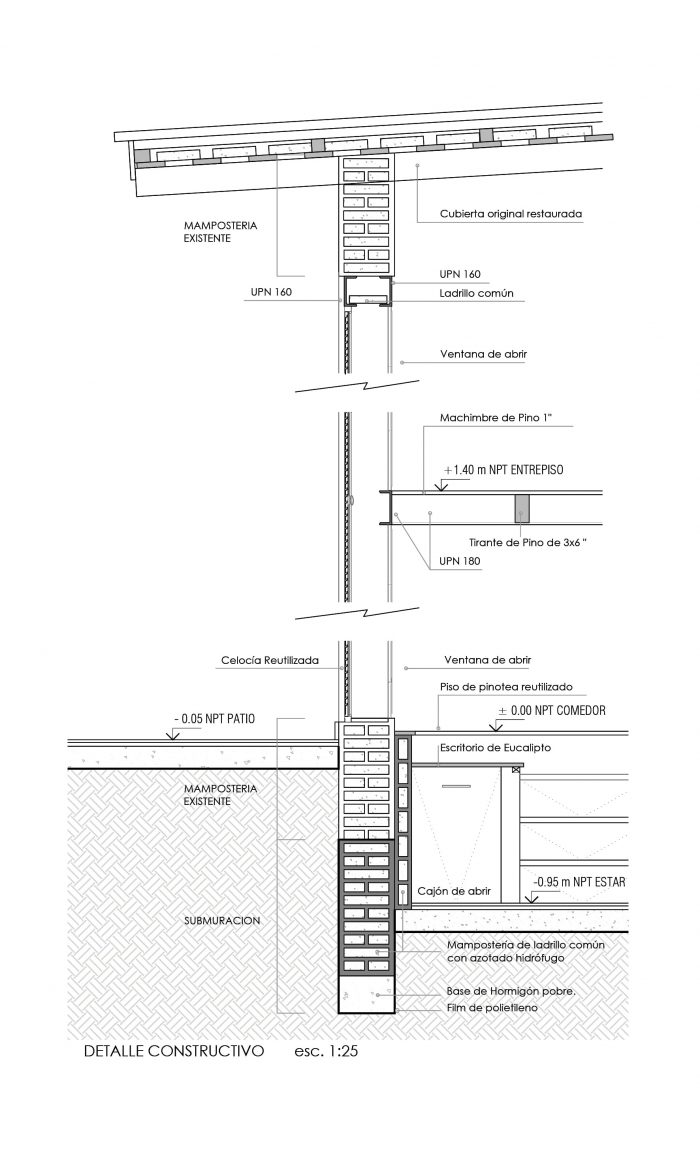建筑庇护着生命的故事,塑造、调节和构建它们。这段回忆是以第一人称写的,因为这个项目的名字是向我的祖父母和他们的房子致敬,我们的家和工作空间。
Architecture shelters life stories, molding, conditioning and building them. This recollection is written in the first person since the name of the project is a tribute to my grandparents and their house, our home and workspace.
安东尼奥之家是1921年在阿根廷圣菲省罗萨里奥市建造的一组房屋中的第7单元。它属于我们城市的一种类型,以前被称为 “公寓房”,诞生于20世纪20年代,作为对工人住房问题的回应,其特点是连续的相同和相邻的单元,从一个共享的走廊进入。主要特点是每间房子都有一个院子,可以通向两个4×4房间、一个浴室和一个厨房。
Casa Antonio is the unit number 7 of a group of houses built in 1921 in Rosario, province of Santa Fe, Argentina. It belongs to a typology that abounds in our city, formerly called “apartment house”, born in the 1920s as a response to the workers’ housing problem and characterized by the succession of identical and contiguous units that are accessed from a shared corridor. The main characteristic is that each house has a courtyard that gives access to two 4×4 rooms, a bathroom and a kitchen.
鉴于它的年龄,属于我家庭的单元的状况处于恶化状态,使其不能居住。2013年,我正在学习我的建筑学位的最后几年,我有一个独立的愿望。在这种情况下,我向我的家人提议进行一个改革和扩建项目,使房子重新可用。我们决定,我们将根据我们的需要调整方案,即一个房子/工作室。
Given its age, the condition of the unit belonging to my family was in a condition of deterioration that made it inhabitable. In the year 2013, I was studying the last years of my architecture degree and I had a desire for independence. In this context, I proposed to my family to carry out a reform and expansion project to make the house usable again. We decided that we would adapt the program to our needs, a house/studio.
经济资源是有限的,所以我们计划回收以前存在的材料,并确定在一段时间内不连续地完成该项目,根据资源的可用性推进。
The economic resources were limited, so we planned to recycle pre-existing materials and defined the completion of the project in discontinuous stages over time, advancing based on the availability of resources.
前提是保持原有屋顶的结构,因为它的材料和热能质量,而且因为这个决定将使房子在施工过程中永远不会暴露在空气中。因此,扩建是通过开挖一个斜坡来实现的,这为在现有的体积内加入一个夹层提供了必要的高度。
The premise was to maintain the structure of the original roof, due to its material and thermal qualities, and because this decision would allow the house to never be exposed to the elements during the construction process. Consequently, the extension is achieved by the excavation of a slope, which provided the necessary height for the incorporation of a mezzanine within the existing volume.
该方案是围绕着一个东西向的循环轴线组织的,该轴线将入口处的门连接起来,使人们可以不受干扰地进入不同的环境。一个固定设备系统提供了多种用途,并衔接了不同的楼层。它是一个办公桌、存储空间、沙发、支撑桌和梯子。通过对旧建筑的承重墙进行镶边和拆除,一个新的金属型材结构被纳入其中,目的是在天井、植被、自然光和房子的每个部分之间获得直接的关系。原来的52平方米被扩大了18平方米,相当于夹层和走廊,吸收了原来天井的表面,连接厨房和浴室。
The program is organized around an east/west circulation axis that links the entrance doors and allows access to the different environments without interference. A fixed-equipment system provides a variety of uses and articulates the different levels. It is a desk, storage space, sofa, support table and ladder. Through operations of linteling and demolition in the load-bearing walls of the old construction, a new structure of metallic profiles is incorporated with the aim of obtaining a direct relationship between the patio, the vegetation, the natural light and each sector of the house. The original 52 m2 are expanded by an additional 18 m2 corresponding to the mezzanine and the corridor that absorbs the surface of the original patio, connecting kitchen and bathroom.
该项目产生了一个三层的单一内部空间,具有不同规模的环境,提供了不同的空间感知。该提案在古老和现代之间共存,重视历史的印记。
The project generates a single interior space of three levels, with environments of different scales, providing variants in spatial perception. The proposal coexists between the old and the contemporary, valuing the imprint of history.
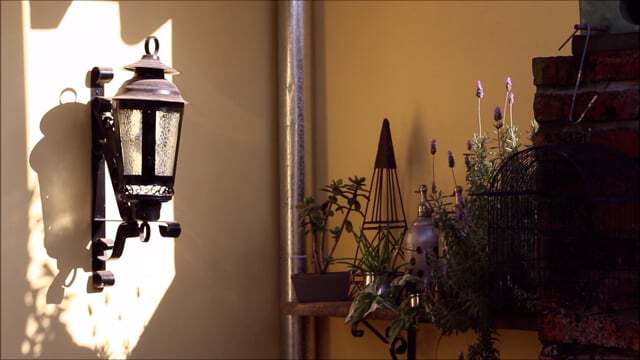
Architects: PALTArq
Area : 70 m²
Year : 2018
Photographs :Juan Pablo García
Manufacturers : AutoDesk, ACINDAR, AcuaSystem , Awaduct, Capea, FV, Saiar, Trimble
Lead Architect : Agostina Bernacchia
Team Palta : Agostina Bernacchia, Juan Pablo García
City : Rosario
Country : Argentina

